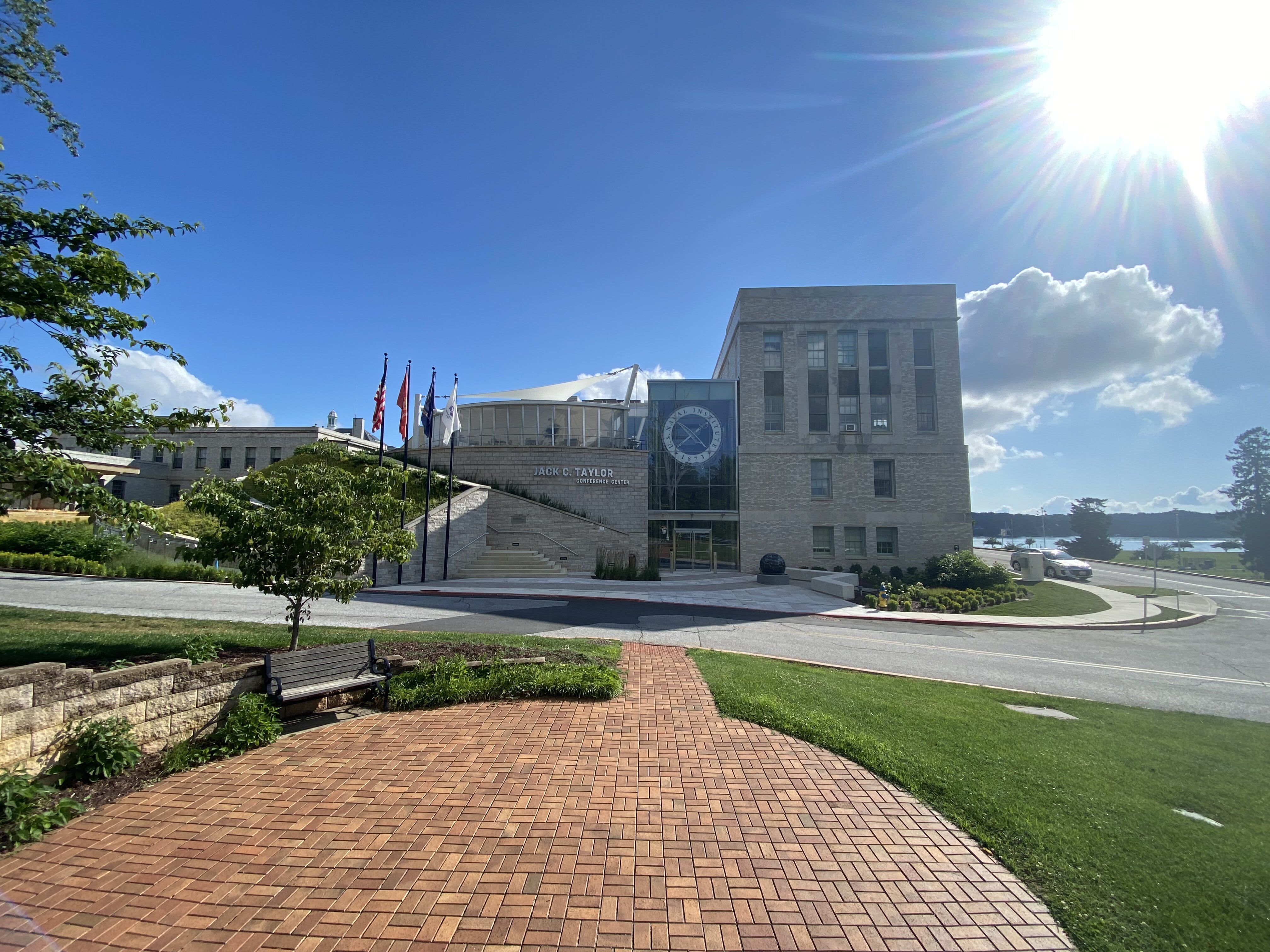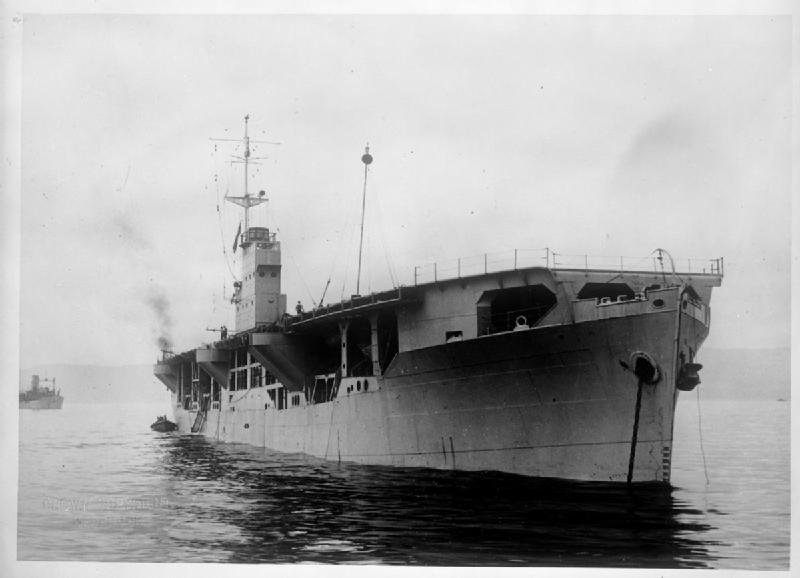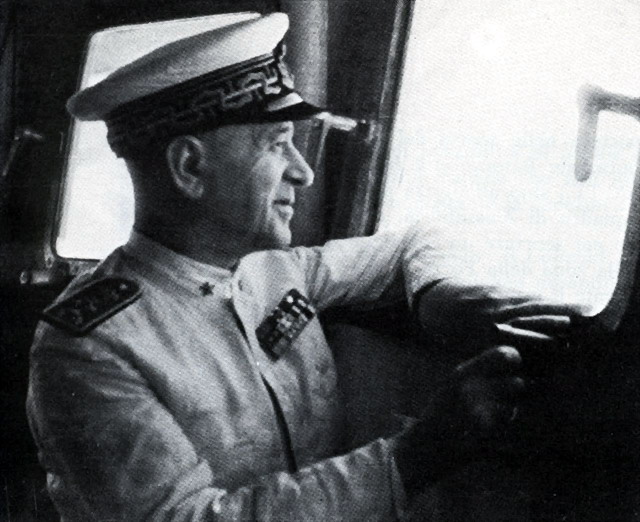|
Escort Carrier
The escort carrier or escort aircraft carrier (U.S. hull classification symbol CVE), also called a "jeep carrier" or "baby flattop" in the United States Navy (USN) or "Woolworth Carrier" by the Royal Navy, was a small and slower type of aircraft carrier used by the Royal Navy, the Royal Canadian Navy, the United States Navy, the Imperial Japanese Navy and Imperial Japanese Army Air Force#Army Escort-Aircraft Carriers, Imperial Japanese Army Air Force in World War II. They were typically half the length and a third the Displacement (ship), displacement of larger fleet carriers, more-lightly armed and armored, and carried fewer planes. Escort carriers were most often built upon a commercial ship hull, so they were cheaper and could be built quickly. This was their principal advantage as they could be completed in greater numbers as a stop-gap when fleet carriers were scarce. However, the lack of protection made escort carriers particularly vulnerable, and several were sunk with gr ... [...More Info...] [...Related Items...] OR: [Wikipedia] [Google] [Baidu] |
HMS Audacity (D10)
HMS ''Audacity'' was a British escort carrier of the Second World War and the first of her kind to serve in the Royal Navy. She was originally the German merchant ship ''Hannover'', which the British captured in the West Indies in March 1940 and renamed ''Sinbad'', then ''Empire Audacity''. She was converted and commissioned as HMS ''Empire Audacity'', then as HMS ''Audacity''. She was torpedoed and sunk by a Kriegsmarine, German U-boat in late 1941. History ''Hannover'' ''Hannover'' was a 5,537 Gross register tonnage, GRT cargo liner built by Bremer Vulkan, Bremer Vulkan Schiff- und Maschinenbau, Bremen-Vegesack, Vegesack and Ceremonial ship launching, launched on 29 March 1939. She was owned by Norddeutscher Lloyd and plied between Germany and the West Indies on the banana run. ''Hannover''s port of registry was Bremen. When World War II began, ''Hannover'' sought refuge in Curaçao, Netherlands Antilles. In March 1940, ''Hannover'' attempted to return to Germany as a blo ... [...More Info...] [...Related Items...] OR: [Wikipedia] [Google] [Baidu] |
Anti-submarine Warfare
Anti-submarine warfare (ASW, or in the older form A/S) is a branch of underwater warfare that uses surface warships, aircraft, submarines, or other platforms, to find, track, and deter, damage, or destroy enemy submarines. Such operations are typically carried out to protect friendly shipping and coastal facilities from submarine attacks and to overcome blockades. Successful ASW operations typically involve a combination of sensor and weapon technologies, along with effective deployment strategies and sufficiently trained personnel. Typically, sophisticated sonar equipment is used for first detecting, then classifying, locating, and tracking a target submarine. Sensors are therefore a key element of ASW. Common weapons for attacking submarines include torpedoes and naval mines, which can both be launched from an array of air, surface, and underwater platforms. ASW capabilities are often considered of significant strategic importance, particularly following provocative instanc ... [...More Info...] [...Related Items...] OR: [Wikipedia] [Google] [Baidu] |
United States Naval Institute
The United States Naval Institute (USNI) is a private non-profit military association that offers independent, nonpartisan forums for debate of national security issues. In addition to publishing magazines and books, the Naval Institute holds several annual conferences. The Naval Institute is based in Annapolis, Maryland. Established in 1873, the Naval Institute claimed "almost 50,000 members" in 2020, mostly active and retired personnel of the United States Navy, Marine Corps and Coast Guard. The organization also has members in over 90 countries. The organization has no official or funding ties to the United States Naval Academy or the United States Navy, though it is based on the grounds of the Naval Academy through permission granted by a 1936 Act of Congress. History The United States Naval Institute was formed on October 9, 1873, by 15 naval officers gathered at the Naval Academy's Department of Physics and Chemistry building in Annapolis to discuss, among other top ... [...More Info...] [...Related Items...] OR: [Wikipedia] [Google] [Baidu] |
Proceedings (magazine)
''Proceedings'' is a 96-page monthly magazine published by the U.S. Naval Institute. Launched in 1874, it is one of the oldest continuously published magazines in the United States. ''Proceedings'' covers topics concerning global security and includes articles from military professionals and civilian experts, historical essays, book reviews, full-color photography, and reader commentary. Roughly a third are written by active-duty personnel, a third by retired military, and a third by civilians. ''Proceedings'' also frequently carries feature articles by Secretaries of Defense, Secretaries of the Navy, Chairmen of the Joint Chiefs of Staff, and top leaders of the Navy, Marine Corps and Coast Guard. Notable contributors Over the decades many notable names have contributed articles to ''Proceedings'' either early in their careers or when they reached the upper echelons of leadership, and in many cases, both. * Tom Clancy, best-selling author of techno-thrillers such as '' The Hu ... [...More Info...] [...Related Items...] OR: [Wikipedia] [Google] [Baidu] |
William F
William is a masculine given name of Germanic languages, Germanic origin. It became popular in England after the Norman Conquest, Norman conquest in 1066,All Things William"Meaning & Origin of the Name"/ref> and remained so throughout the Middle Ages and into the modern era. It is sometimes abbreviated "Wm." Shortened familiar versions in English include Will (given name), Will or Wil, Wills, Willy, Willie, Bill (given name), Bill, Billie (given name), Billie, and Billy (name), Billy. A common Irish people, Irish form is Liam. Scottish people, Scottish diminutives include Wull, Willie or Wullie (as in Oor Wullie). Female forms include Willa, Willemina, Wilma (given name), Wilma and Wilhelmina (given name), Wilhelmina. Etymology William is related to the German language, German given name ''Wilhelm''. Both ultimately descend from Proto-Germanic ''*Wiljahelmaz'', with a direct cognate also in the Old Norse name ''Vilhjalmr'' and a West Germanic borrowing into Medieval Latin ''Wil ... [...More Info...] [...Related Items...] OR: [Wikipedia] [Google] [Baidu] |
Merchant Aircraft Carrier
A merchant aircraft carrier (also known as a MAC ship, the Admiralty (United Kingdom), Admiralty's official 'short name') was a limited-purpose aircraft carrier operated under British and Dutch civilian registry during World War II. MAC ships were adapted by adding a flight deck to a bulk grain ship or oil tanker enabling it to operate anti-submarine aircraft in support of Allies of World War II, Allied convoys during the Battle of the Atlantic. Despite their quasi-military function, MAC ships retained their mercantile status, continued to carry cargo and operated under civilian command. MAC ships entered service from May 1943 when they began to supplement and supplant escort carriers, and remained operational until the end of the war in Europe. Development In 1940, Captain M. S. Slattery RN, Director of Air Matériel at the Admiralty (United Kingdom), Admiralty, proposed a scheme for converting merchant ships into aircraft carriers as a follow-up to the CAM ship project. Sl ... [...More Info...] [...Related Items...] OR: [Wikipedia] [Google] [Baidu] |
CAM Ship
CAM ships were World War II–era British merchant ships used in convoys as an emergency stop-gap until sufficient escort carriers became available. ''CAM ship'' is an acronym for catapult aircraft merchant ship.Wise, pp. 70–77 They were equipped with a rocket-propelled catapult launching a single Hawker Hurricane, dubbed a "Hurricat" or "Catafighter" to destroy or drive away an attacking bomber. Normally the Hurricane fighter would be lost when the pilot then bailed out or ditched in the ocean near the convoy. CAM ships continued to carry their normal cargoes after conversion. The concept was developed and tested by the five fighter catapult ships, commissioned as warships and commanded and crewed by the Royal Navy – but the CAM ships were merchant vessels, commanded and crewed by the Merchant Navy. Origin The German Luftwaffe had Focke-Wulf Fw 200 Condor aircraft with a range of nearly . After the Fall of France, these aircraft could operate from western F ... [...More Info...] [...Related Items...] OR: [Wikipedia] [Google] [Baidu] |
Fighter Catapult Ship
Fighter catapult ships (FCS) also known as Catapult Armed Ships were an attempt by the Royal Navy to provide air cover at sea. Five ships were acquired and commissioned as Naval vessels early in the Second World War, and these were used to accompany convoys. The concept was extended to merchant ships which were also equipped with rocket-assisted launch systems and known as Catapult Aircraft Merchantmen ( CAM ships). Both classes could launch a disposable fighter (usually a Hawker Hurricane) to fight off a threat, with the pilot expected to be rescued after either ditching the aircraft or bailing out close to the launching ship. The ships There were five fighter catapult ships, collectively known as the ''Pegasus'' class. Two, ''Patia'' and ''Springbank'', were lost during the war. They were each equipped with a single Fairey Fulmar or "Hurricat" (an adapted Hawker Hurricane Mk.1A). FCS combat launches See also * Aircraft cruiser * CAM ship * List of aircraft carriers of Wo ... [...More Info...] [...Related Items...] OR: [Wikipedia] [Google] [Baidu] |
Light Aircraft Carrier
A light aircraft carrier, or light fleet carrier, is an aircraft carrier smaller than the Fleet carrier, standard carriers of a navy. The precise definition of the type varies by country; light carriers typically have a complement of aircraft only one-half to two-thirds the size of a full-sized fleet carrier. A light carrier was similar in concept to an escort carrier in most respects; however, light carriers were intended for higher speeds to be deployed alongside fleet carriers, while escort carriers were typically relatively slow and usually defended equally slow convoys, as well as providing air support during amphibious operations. History In World War II, the United States Navy produced a number of light carriers by converting cruiser hulls. These s, converted from light cruisers, were unsatisfactory ships for aviation with their narrow, short decks and slender, high-Sheer (ship), sheer hulls; in virtually all respects the escort carriers were superior aviation vessels. T ... [...More Info...] [...Related Items...] OR: [Wikipedia] [Google] [Baidu] |
Attack On Pearl Harbor
The attack on Pearl HarborAlso known as the Battle of Pearl Harbor was a surprise military strike by the Empire of Japan on the United States Pacific Fleet at Naval Station Pearl Harbor, its naval base at Pearl Harbor on Oahu, Territory of Hawaii, Hawaii, on December 7, 1941. At the time, the U.S. was a Neutral powers during World War II, neutral country in World War II. The air raid on Pearl Harbor, which was launched from Aircraft carrier, aircraft carriers, resulted in the U.S. entering the war on the side of the Allies of World War II, Allies on the day following the attack. The Imperial General Headquarters, Japanese military leadership referred to the attack as the Hawaii Operation and Operation AI, and as Operation Z during its planning. The attack on Pearl Harbor was preceded by months of negotiations between the U.S. and Japan over the future of the Pacific Ocean, Pacific. Japanese demands included that the U.S. ABCD line, end its sanctions against Japan, cease aidi ... [...More Info...] [...Related Items...] OR: [Wikipedia] [Google] [Baidu] |
Battle Of Taranto
The Battle of Taranto took place on the night of 11/12 November 1940 during the Second World War between British naval forces (Admiral Andrew Cunningham) and Italian naval forces (Admiral Inigo Campioni). The Royal Navy launched the first all-aircraft ship-to-ship naval attack in history, employing 21 Fairey Swordfish biplane torpedo bombers from the aircraft carrier in the Mediterranean Sea. The attack struck the battle fleet of the ''Regia Marina'' at anchor in the harbour of Taranto, using aerial torpedoes, despite the shallowness of the water. The success of this attack augured the ascendancy of naval aviation over big-gun battleships. According to Cunningham, "Taranto, and the night of 11/12 November 1940, should be remembered forever as having shown once and for all that in the Fleet Air Arm the Navy has its most devastating weapon". Background Since long before the First World War, the Italian ''Regia Marina''s First Squadron had been based at Taranto, a port-city on ... [...More Info...] [...Related Items...] OR: [Wikipedia] [Google] [Baidu] |
Washington Naval Treaty
The Washington Naval Treaty, also known as the Five-Power Treaty, was signed during 1922 among the major Allies of World War I, Allies of World War I, which agreed to prevent an arms race by limiting Navy, naval construction. It was negotiated at the Washington Naval Conference in Washington, D.C. from November 1921 to February 1922 and signed by the governments of the British Empire (including the United Kingdom, Canada, Australia, New Zealand, South Africa and India), United States, French Third Republic, France, Kingdom of Italy, Italy, and Empire of Japan, Japan. It limited the construction of battleships, battlecruisers and aircraft carriers by the signatories. The numbers of other categories of warships, including cruisers, destroyers, and submarines, were not limited by the treaty, but those ships were limited to 10,000 tons displacement (ship), displacement each. The treaty was finalized on February 6, 1922. Ratifications of it were exchanged in Washington on August 17, 1 ... [...More Info...] [...Related Items...] OR: [Wikipedia] [Google] [Baidu] |









